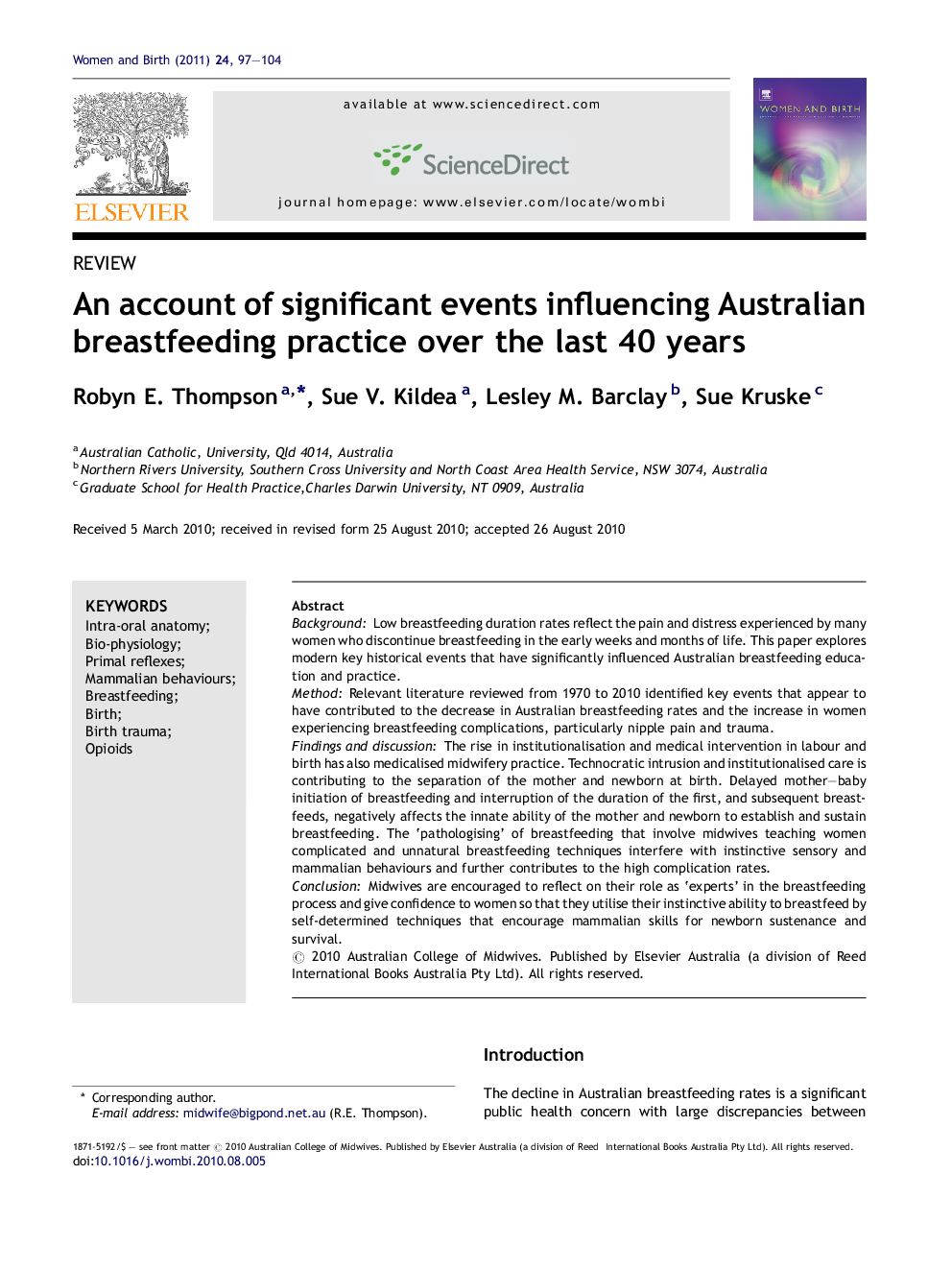| Article ID | Journal | Published Year | Pages | File Type |
|---|---|---|---|---|
| 2636851 | Women and Birth | 2011 | 8 Pages |
BackgroundLow breastfeeding duration rates reflect the pain and distress experienced by many women who discontinue breastfeeding in the early weeks and months of life. This paper explores modern key historical events that have significantly influenced Australian breastfeeding education and practice.MethodRelevant literature reviewed from 1970 to 2010 identified key events that appear to have contributed to the decrease in Australian breastfeeding rates and the increase in women experiencing breastfeeding complications, particularly nipple pain and trauma.Findings and discussionThe rise in institutionalisation and medical intervention in labour and birth has also medicalised midwifery practice. Technocratic intrusion and institutionalised care is contributing to the separation of the mother and newborn at birth. Delayed mother–baby initiation of breastfeeding and interruption of the duration of the first, and subsequent breastfeeds, negatively affects the innate ability of the mother and newborn to establish and sustain breastfeeding. The ‘pathologising’ of breastfeeding that involve midwives teaching women complicated and unnatural breastfeeding techniques interfere with instinctive sensory and mammalian behaviours and further contributes to the high complication rates.ConclusionMidwives are encouraged to reflect on their role as ‘experts’ in the breastfeeding process and give confidence to women so that they utilise their instinctive ability to breastfeed by self-determined techniques that encourage mammalian skills for newborn sustenance and survival.
